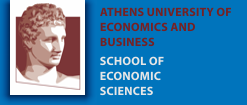| Abstract |
The present review examines the primary (heatwaves and air pollution) and cascading (population density, traffic and noise, health issues, and biodiversity loss) hazards in urban settlements. The motivation is to understand the interaction between hazards in urban areas to develop a novel holistic approach that enhances urban sustainability. Three objectives are (i) to monitor valuation studies that reveal willingness to pay (WTP) for major urban-related challenges, (ii) to assess non-marketed valuation studies, and (iii) to examine the interactions between the hazards and their impacts on people and the environment. Based on Environmental Valuation Reference Inventory and Ecosystem Services Valuation Database, from 5329 studies, 80 were retrieved that focus solely on the economic measures of 220 WTP values for different ecological and recreational issues during the period 2000-2023. The findings show that regarding the mean WTP (MWTP) values, the valuation studies reveal a MWTP of 142� for heatwaves mitigation, whereas for air pollution 76�. Moreover, in terms of cascading hazards, the highest MWTP was for population density (298�), followed by biodiversity loss (96�), health issues (63�), and lastly by traffic and noise with 42�. However, biodiversity loss is the most significant stressor for all target groups (citizens, workers, and flora and fauna), therefore, policymakers should invest in green and blue infrastructure, energy-saving technologies, and transportation alternatives in order to improve urban resilience, safeguarding both human health and the natural environment. |

